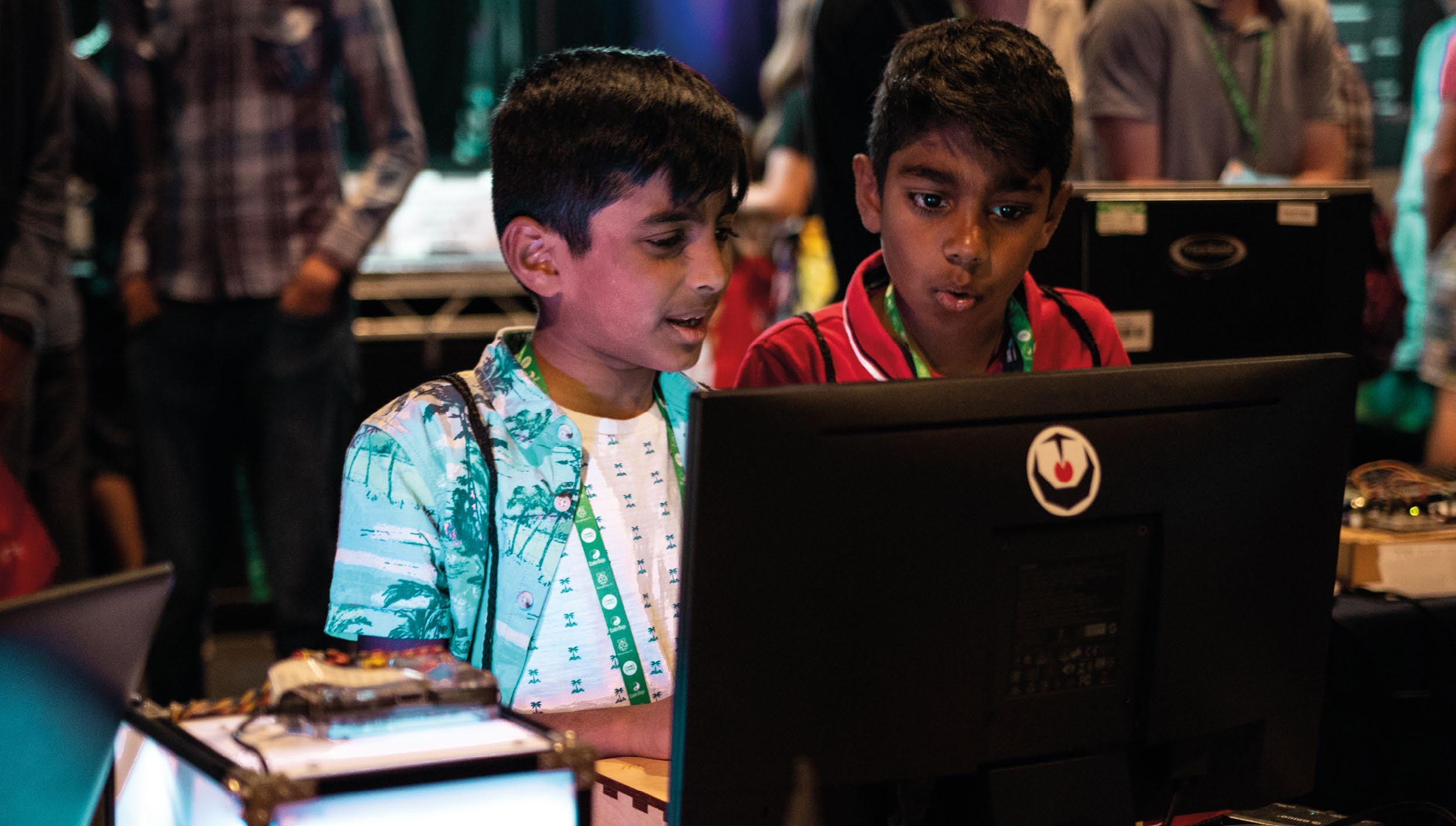
5 minute read
ENCOURAGING TALK
COLLABORATION AND COMMUNICATION IN THE COMPUTING CURRICULUM
Neil Rickus examines ways to provide opportunities for talk, and to enable pupils to collaborate effectively in computing lessons
Advertisement
The English computing curriculum states that pupils must be able to create content and express themselves. This can lead to a range of collaboration and communication opportunities. In particular, Reid and his colleagues outline that having technology available enables pupils to develop a variety of social skills, such as communication, negotiation, problem-solving, and collaboration (helloworld.cc/reid02). To engage pupils in computing lessons and ensure coverage across the curriculum, Computing at School says there’s a need to undertake creative projects in a “fun and collaborative environment” and, when tasks undertaken are relevant to the pupils’ interests, they can
©Image is licensed under CC2.0 and was taken by Lucélia Ribeiro undertake “exploratory talk” (helloworld. cc/mercer08) in the safe and secure environment of the classroom. So, how can we provide opportunities for collaboration when teaching computing?
Computational thinking and program development
Barefoot Computing defines computational thinking, which underpins the computing curriculum, as a combination of six concepts and five approaches, with each area providing opportunities for pupils to work together. Barefoot’s approach to collaboration could involve a range of pedagogical techniques, such as paired programming, which allows pupils to develop their programs together, with one pupil solely using the input devices, while the other pupil focuses on the required instructions. Collaboration also complements a number of other computational thinking approaches, such as debugging and persevering, which may not be as effective if approached independently. Teachers have also noted the “positive motivational impact” that collaborating on programming tasks has on individuals and on the class as a whole (helloworld.cc/sentance15).
In DT, the “engineering design process” (helloworld.cc/bers10) is often followed,
with the Imagine and Plan stages allowing children to articulate their ideas and share their thoughts with others. Such a process is increasingly being used when implementing physical computing projects, which ensures pupils have carefully thought about both the physical and programming elements of their project before beginning work. The process also allows children to regularly evaluate and improve their work, which, as Dawes and her colleagues state, lets them “talk [the outcome] into existence” through the various iterations of their project.
Teacher input
When teaching programming, teachers need to ensure they focus on the concepts being taught, rather than on the hardware or software being used, as pupils can become disengaged if they keep using the same technology on an ongoing basis. By using technical language, pupils become more familiar with technical terms, which is essential as they produce more complex projects and move to using text-based programming environments (helloworld.cc/ kolling15). When working with others, this can also allow pupils to articulate clearly how their programs function, and it can also facilitate debugging.
When using paired programming and other collaborative teaching approaches, (such as C3B4ME, in which pupils have to ask three peers for assistance before asking the teacher), teacher modelling is needed, to demonstrate to pupils how they should interact (helloworld.cc/bird14). This enables children to ensure they empathise, listen, and potentially continue their conversations in more depth, rather than the exchange ending in a dispute (helloworld. cc/littleton13). Teachers with limited experience of delivering computing lessons can use these pedagogical techniques to act more as a facilitator, rather than a knowledge bearer, and can help to avoid them being inundated with “lazy questions” (helloworld.cc/bird14). However, this process needs to be carefully managed, to ensure more able pupils aren’t continuously disturbed during lessons, and that the lesson is challenging for all pupils.
Block-based programming environments can facilitate further speaking and listening activities. For example, most environments allow sound to be recorded for inclusion in pupils’ programs, and a spoken narrative can often be recorded while the program is on the screen.
TALK DURING COMPUTING
Speaking and listening activities in computing lessons need to be carefully managed. Giving your learners too much freedom can lead to off-task behaviour, while limiting collaboration reduces opportunities for pupils to learn from each other. We work carefully with pupils to model the appropriate language for talk, and encourage them to use technical vocabulary where possible.

Introducing IT elements
Unplugged computing activities enable pupils to develop their understanding of computational thinking without the need for technology. Many unplugged activities, such as Phil Bagge’s Sandwich Robot (helloworld.cc/sandwich), require pupils to limit their vocabulary choices and give precise, unambiguous instructions, while developing their understanding of the computational thinking areas of abstraction (removing unnecessary detail), evaluating, and collaborating. These activities also provide opportunities to introduce other technologies into lessons, such as the camera on a tablet device, which pupils could use to film their peers in role to assess the quality of their instructions, and to aid debugging.
The use of IT to record audio and video can also enhance other areas of the computing programme of study. E-books containing multimedia content created by the pupils provide opportunities to share their work with an audience beyond the classroom and, when considered in conjunction with Papert’s theory of constructionism, this use of technology is likely to enhance pupil outcomes by providing an audience for their work. When pupils are including information gained from their own online research, the most successful pupils use “exploratory talk” (helloworld.cc/knight15) to assist with “sorting out his or her own thoughts” (helloworld.cc/mercer08).
Other recording technologies, such as talking picture apps, which allow recordings to be synchronised with the movement of a character’s lips, can enable pupils to demonstrate their understanding of curriculum areas without the barrier of having to produce written content. For certain pupils with special educational needs and disabilities, particularly those with autism, the use of a computer can even help to reduce anxiety and effectively aid communication, according to the Autism Education Trust.
So, how can you provide more opportunities for pupils to talk and collaborate when teaching computing? Let me know your thoughts via Twitter @computingchamps.

NEIL RICKUS
Neil is a senior lecturer in computing education at the University of Hertfordshire. He is a CAS community leader and a Raspberry Pi, Google, and Microsoft Certified Educator (@computingchamps).










